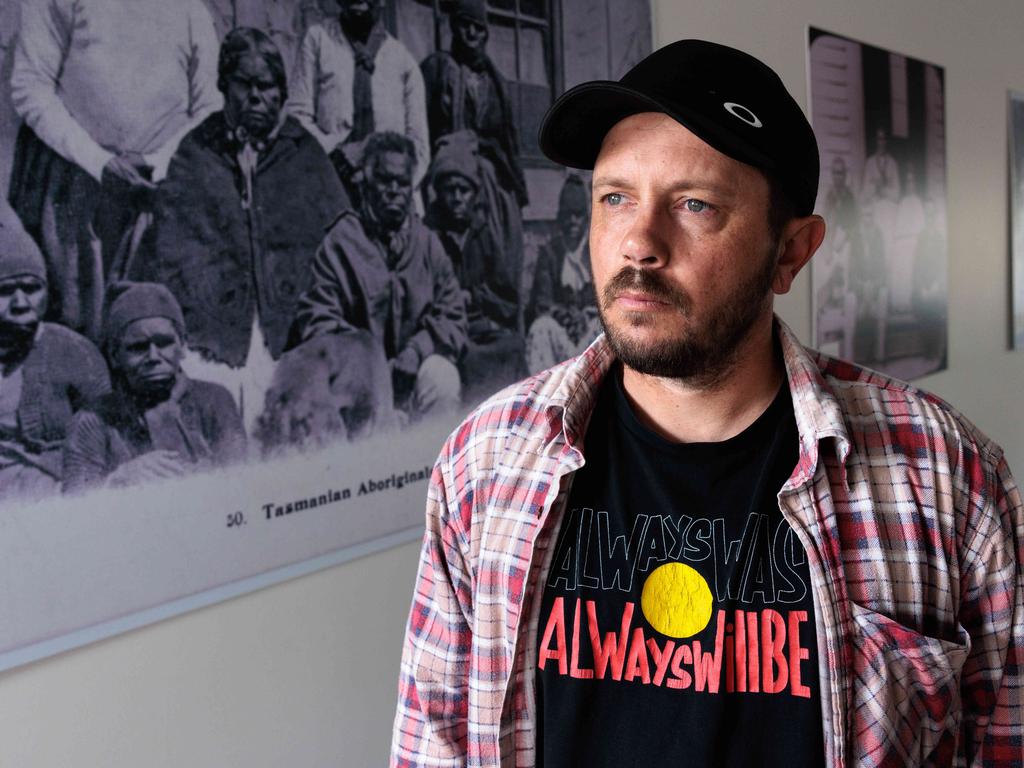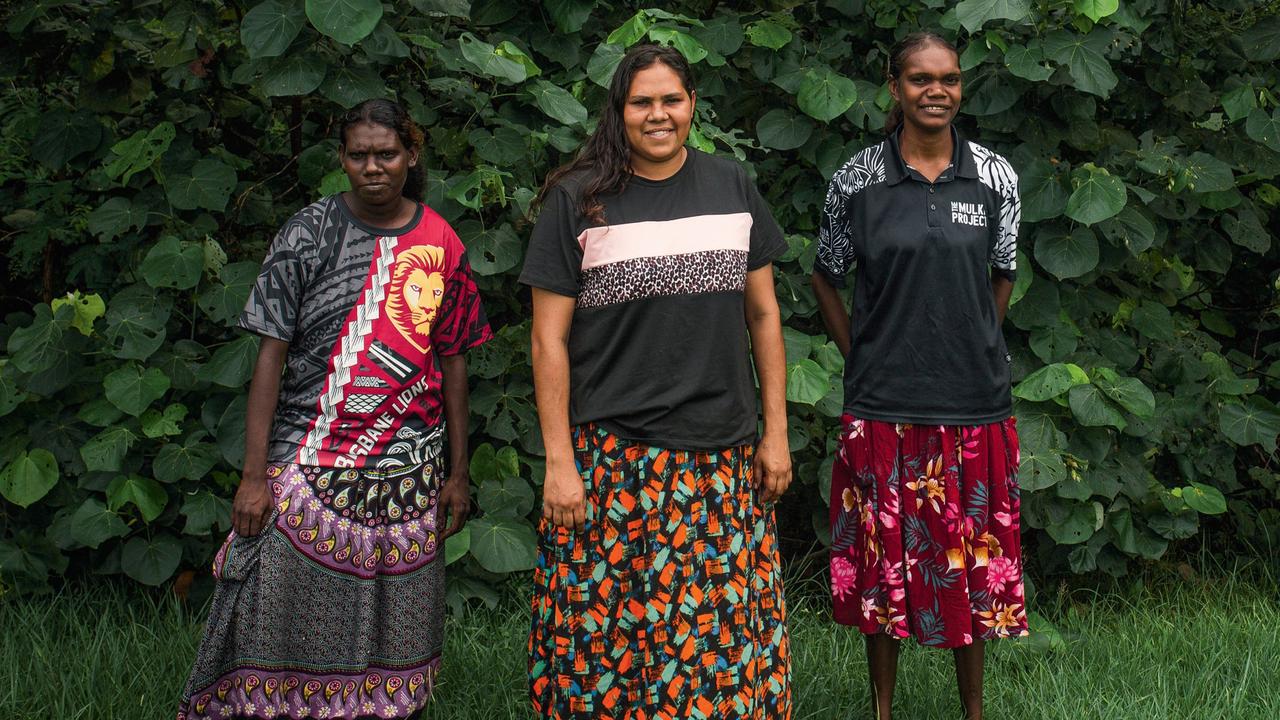Dark Mofo returns, with its God complex intact
The controversial Tasmanian winter festival has been resurrected. What’s changed?

I’m searching for the room where you throw tomatoes at a gimp. It’s an unholy hour at Dark Mofo’s Night Mass: God Complex, an immense work that has transformed abandoned commercial spaces, a street and a theatre in Hobart into a seemingly chaotic labyrinth full of performers. There’s a fantastic timelessness inside it. I’m hunched over a stranger’s phone receiving directions from another festival-goer in this fever dream. Near the shark. Near Daddy. Don’t get lost in the mirrors. If you hit the slide to the rave cave, you’ve gone too far. I provide the location of the hidden candy room in exchange and head towards the DJs. I have until 4am closing time to complete my mission.
There’s a curious tension in the split between reality and our absurdist excess. We are witnessing the resurrection of Dark Mofo, the festival that spreads out over the city, and the first iteration by artistic director Chris Twite. His overarching theme of “tension” is suited to a festival with infamous friction. Dark Mofo and its Mona organisers have dealt with uncertainty, controversy, funding pressures, then the decision to scale it back last year to a significantly reduced presence – the Winter Feast, Nude Solstice Swim and a limited program – which, anecdotally, appeared to impact winter tourism numbers for Tasmania.

The state government has now invested $21.6m to 2027. However, as the festival opened, we were in suspense over whether Dark Mofo could stick the landing. There was a lot riding on the immense program, spread across June 5–15, which wraps on June 21 with the nude swim. It skews heavily towards free and low-cost events, with a competing stack of ticketed shows for international and Australian performances and film, and, for the first time, a show in the planetarium in Ulverstone in the state’s north. But numbers for the first week suggested it had paid off, with 210,000 visitations to Dark Mofo’s festival sites and the Winter Feast, not including partner exhibition spaces such as the State Library or Mona. That’s well above comparative numbers of about 180,000 for week one of the 2023 festival.
Dark Mofo has become, according to Twite, a cultural and seasonal ritual of catharsis. The stable constants, such as the Winter Feast, the swim, the Dark Mass and the Balinese ritual burning of Ogoh-Ogoh, anchor our more chaotic encounters.
“We ask people to engage with complex and confronting ideas, and then they can go from there to Night Mass and release that energy and rejuvenate,” Twite says. “And then go to the Ogoh and purge their fears, and go to the swim and cleanse, and the cycle continues again. It’s these beautiful moments that we want people to move through throughout the festival.”
Dark Mofo is more difficult to define than ever – “so many things” to so many people, as Twite says. No two are the same. But Twite feels provocation and confrontation are still core contributions to the Australian artistic landscape.
“All boats rise in the high tide, and if we can continue … to get work that is engaging and confronting and pushes forward ideas that people have conversations about, then I think that encourages further conversations,” he says.

The program certainly still champions challenging art that would struggle to find a home in other Australian festivals, such as Paula Garcia’s Crash Body. It’s a captivating, whirling vehicular dance of near-misses, predatory circling and characterful manoeuvring finishing in a heart-stopping live collision of two cars. Part theatre, part sculpture, the scrunched metal carcasses linger on display in the aftermath.
“The tension is what Paula was really striving for,” Twite said. “We all knew there would be a crash, but even in that moment it was so intense, the electricity in the air.”
Other parts of the program lack the sharp teeth of the edgier Dark Mofo. Former years saw a three-hour sacrificial bloodbath and a live burial that stopped traffic. Now there are family-friendly Coffin Rides with photographic memento. Then again, in a time where we can witness real-world horrors on handheld devices, perhaps we have become more acclimated to darkness. Maybe that’s why Dark Mofo’s forms of violence can feel hit-and-miss.
In the belly of the Old Bank building, a masked man in black paces a hall, lashing out at the wall with a police baton in unprovoked outbursts: there’s definitely tension in Paul Setubal’s Because The Knees Bend. However, it sits in juxtaposition to Carlos Martiel’s captivating Cuerpo upstairs in which a film projection shows the artist, a naked black man with a noose around his neck, held by a group of people. They sweat, struggling to hold the weight of a life and prevent strangulation, the long-drawn threat of violent lynching more suspenseful in a silence of strained breath, shuffling feet and the whisper of skin on skin. The latter, I feel, carries more conversation beyond the moment of shock. When I leave Because The Knees Bend, I no longer feel it. However in week two Martiel performed Custody, submitting his body to the slow crush of sand in Hobart’s City Hall. Dark Mofo may not bite as it used to, but it is not wholly tame.


And where does music sit? While acts such as Clown Core provoke curiosity and shock with extreme experimental jazz metal, Angry Blackmen present jaw-dropping hypnotic sounds with fury and pounding beats, and later in the program,progressive, conceptual and confronting sounds with Hymns to the Dead and Berlin Atonal, can we say the folk revival stylings of Beth Gibbons or charismatic rapper Tierra Whack provide the same challenge, or just draw numbers?
I think there is tension between the old and new DarkMofo, between arts culture and tourism function. The sign of a maturing festival is also in the local “fringe” that springs up around it, and the city seems more vibrant with independent creatives and venues.
As Dark Mofo has become more embedded in the Tasmanian calendar it has come toreflect some Tasmanian arts and creativity in its programming. Hannah Foley pulls the subterranean sounds of the Gordon Dam into the cold open air of Hobart in Channelling (between here and then, a wall), Good Grief Studios features identity explorations by local artists, and librarian-artist Brigita Ozolins brings banned books back into the light at the State Library.
Trawlwoolway artist Nathan Maynard’sWe Threw Them Down The Rocks Where They Had Thrown The Sheep, rooted in the darkest parts of Tasmanian history, is at the centre of the visual arts program. There are 480 sheep heads in jars lining shelves in an eerie basement, the dank odour of embalming fluid seeping into every breath. The name is a quote from a record of the 1828 Cape Grim massacre of Indigenous people, supposedly in retaliation for killing sheep. This isn’t explained to audiences wandering in.
The program and presentation is deliberately sparse in its descriptions. It’s intended to allow people to explore without dictating their perspective, but sometimes you need to know what you’re looking at. Maynard’s story is in contrast to A Murriality, a new exhibition of work from Gordon Hookey, an Aboriginal man of the Waanyi people. These bold, bright, angry, satirical and playful wordy mouthfuls of paint and animation are powerfully defiant stories too, but can speak for themselves, down to the use of the much-maligned scrub turkey (The Red, Yella & Black) as a symbol of cultural survival, “We are still here”.

However, some encounters with altered states, wonder and intuition easily stand alone, such as Quasi, artist Ronnie Van Hout’s disarming sculpture perched atop the Henry Jones Hotel, an amusing monstrosity of face and hand. Children may not understand the protest behind Nicholas Galanin’s Neon Anthem, but they love to “Scream until you can’t breathe” in an open field. You don’t need to be told the details of Nonotak’s Sora to experience this installation as a space of wind and starlight, nor that the Genasys 360XL emergency public broadcast system facilitates the wonder of the haunting, angelic call of Everything Is Recorded ringing out through Hobart. Void, a mixed media contemporary dance by Joshua Serafin, reaches a breathtaking crescendo that is far more effective than its narration: the Theatre Royal stage becomes a whipping frenzy in which a substance membranous,viscous and black is flung like silk across a dancer’s writhing body, transforming matter with hypnotic practical effects. Even Rival Consoles’s mesmerising, textured electronic soundscapes at the Odeon need no introduction.
Dark Mofo does blasphemy beautifully, leaning on religious association to blend two artworks into a space of unholy worship in Basilica: a deconsecrated church hosts a spectacular monstrous mother goddess, Travis Ficarra’s Chocolate Goblin, towering towards the neo-gothic nave; opposite, a projection of Mortal Voice, by Cura8 and KILAT extreme metal vocalist Karina Utomo, fills the air with deep vocal drones accompanied by movements of ritualistic precision.
The almost camp irreverence is at least as important as Dark Mofo’s serious attempts to shock or horrify, and it’s here we find catharsis through connection, with Night Mass, the resolution of Dark Mofo’s tensions, an investment in a thriving mini community of artists and performers, many of them local. Night Mass: God Complex was conceived by late night producer Lane Pitcher as an immersive theatre piece on the idea of playing God. Everything from Daddy the Dom to intense multi-screen audiovisual spaces, a stop-in confessional and “playing god” on video games weaves into her narrative and coaxes us into unusual encounters.

Over four sessions, 379 artists perform, including dancers, DJs, puppeteers, live bands and actors. Their identities are secret from the public, but Pitcher says for the house party space (an absurdist realm of suburban Australiana with shag carpet, goon and fairy bread) the main live acts have chosen friends’ bands to fill the night’s setlist, creating the organic feel. “I invited artists to explore the tension between creation and destruction, humanness and omnipotence, dominance and submission,” she says. “People go to the club to connect. The space and design and performers we chose prompted a lot of interactions. I wanted people to interact with people they never had before.”
Although I never did find the gimp, the weekend was an endless stream of the unexpected. Dark Mofo is not always coherent, but 2025 shows the threads of the identity it is making for itself: Tasmanian, curious, ritualistic and unique, the impact not necessarily in confrontation, outrage or being edgy for the hell of it, but in irresistibly drawing back the annual winter pilgrimage of converts.
Dark Mofo, Hobart, until June 15 and on June 21






To join the conversation, please log in. Don't have an account? Register
Join the conversation, you are commenting as Logout